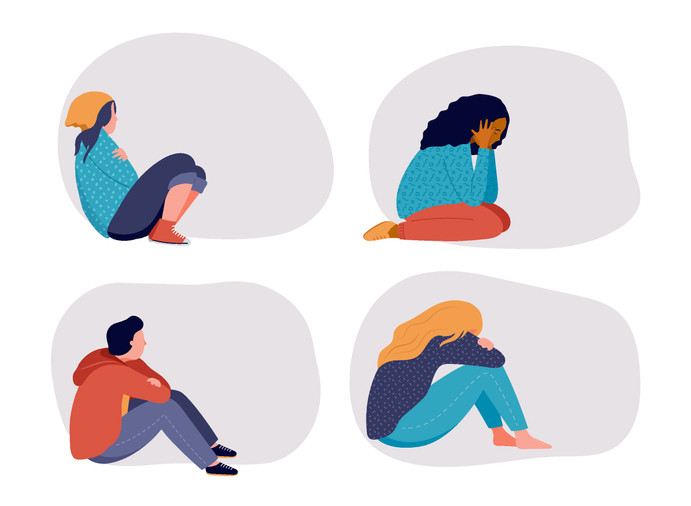Jin Schofield (9) STAFF REPORTER
INTRODUCTION
Recently in the media, many stories have been published involving the wish of those wanting to be euthanized being revoked by hospitals, or restricted in a way that goes against the will of that person. These stories have sparked discussions about whether euthanasia should be legal – a battle between those who believe euthanasia to be a right, and others who see it as inhumane killing. This topic of euthanasia is very controversial, and each opinion on the issue is deeply connected to a person’s values, beliefs, and experiences. It is for these reasons that I hoped to find the factors of someone’s personality or life experiences that cause a certain opinion of euthanasia. Within this paper, I will guide you through the results of a survey I conducted within Richmond Hill, involving 72 participants, and the testing of 31 independent variables to find the most influential factors in the determination of my dependent variable, opinion on euthanasia. Of these 31 independent variables, the three that were found to be the most significant allowed me to form the following three questions:
- How does the frequency of attendance to a religious institution impact opinion of euthanasia?
- Are those who do not watch, listen, or read the news more likely to support euthanasia?
- How does one’s political standing (classified from 1 to 10, ‘left-wing’ to ‘right-wing’) impact opinion of euthanasia?
Although the limited number of cases has led to a 6.4% chance of a false positive (probability my findings were caused by chance), I believe that my results, nevertheless, reveal the underlying causes of views on euthanasia in Richmond Hill.
LITERATURE REVIEW
Currently, much information is presented about the philosophy and arguments behind each side of the euthanasia argument among online sources. Additionally, online sources presented information about the fact that and reasoning behind why many religions do or do not support euthanasia (“Religion and Euthanasia”), and which Canadian political parties are associated with which stances on euthanasia (“The Quick Guide…”) (stating that the more left-wing a party is, with the exception of Libertarian, the more it supports euthanasia), while not presenting much information about the relationship between the consumption of news. However, none of these online sources explained how much gravity each of these factors has, or the difference between what may be a coincidence from a true correlation and/or causation. However, among academic literature, significant research on the impact of religion can be found, while there is none to be found concerning the impact of news-watching and political views. These studies showed that palliative-care nurses’ attitudes towards euthanasia were influenced by both the mass attendance of their religion and the content of their religion, although more so by the latter. (Gielen et al. 48) Other studies found more generally that religiosity was a significant factor towards attitudes towards euthanasia (including child euthanasia), negatively correlating with euthanasia support. (Barry et al. 4; Aghababaei et al. 337; Deak et al. 68)
DATA AND STATISTICS TOOLS
This study is based on 72 responses I collected through surveys (in the form of written questionnaires, accompanied by a consent form and references) conducted in Richmond Hill. The responses were analyzed using linear regression in SPSS.
METHODOLOGY
Dependent Variable
As we are measuring the factors that impact the opinions of euthanasia, I chose the opinion of euthanasia of participants as the dependent variable. This is measured by asking the participant to rank their support of euthanasia from a 1-10 scale, 1 being “never”, and 10 being “always, even if they are psychologically compromised while making the decision”.
Independent Variables
The first independent variable, religiousness, was chosen initially because of the beliefs of certain religions towards euthanasia that I was aware of – most of which were against euthanasia (e.g. Catholicism, Islam, etc…). I measured this variable by asking the participant how many times every month they attended a religious institution, not including schools.
Whether the participant watched the news was my second variable, as I was aware news sources at the time were publishing stories about people who were negatively impacted by anti-euthanasia regulations, which would impact the participant’s attitude towards euthanasia. I initially hoped to measure the effects of watching/reading/listening to individual news sources (measuring resulting bias), but realized that no one news source was found significant enough while conducting the linear regression to have reliable implications. I then collected the participants that claimed they did not watch any news, which was a considerable amount, and created a new variable, which proved to be very significant. With this new variable, I hoped to measure the impact of an overall more informed view of current affairs, euthanasia’s definition, and euthanasia’s impact on people and on opinions.
My final independent variable is the political standing of the participant. As I knew that left-leaning political parties in Canada tended to support euthanasia to a larger extent, I considered this variable important. I measured this by asking participants to rate their political leaning from 1 to 10 (1 being more left-wing, 10 being more right-wing).
Hypotheses
(Independent Variable: Hypothesis for Impact on Opinion of Euthanasia)
Religiousness: People who attend religious institutions more often will be less supportive of euthanasia.
Watching the News: People who watch the news will be more supportive of euthanasia.
Political Standing: People who are more right-wing will be less supportive of euthanasia.
RESULTS
Note:
‘Religious’ refers to religiousness
‘NoNews’ refers to whether the participant does or does not watch the news, 1 meaning they do not, 0 meaning they do
‘Views’ refers to their political standing
On the rightmost column of the chart below, the F-statistic value of 0.064 represents that the overall model, including all of the IVs, has a 6.4% chance of being a false positive, or being caused by chance or coincidence. This represents how well we can extrapolate using the data collected with a sample of 72 people to the whole population of Richmond Hill. Although this is not the ideal significance (in the social sciences, 5% is the threshold), it was the best significance I could achieve with such a small number of cases.
Coefficients of the Model
IV B Std. Error t-Sig. Beta
Religious. -0.065 0.035 . 0.07 -0.218
Furthermore, unlike http://amerikabulteni.com/2013/01/09/zero-dark-thirty-filmi-ciaden-oscara-derin-mudahale-mi/ buying viagra in uk, cialis is available only on reliable online medicine stores. In such conditions, the home remedies for vertigo can help a person to reduce the attacks of vertigo, and it can also help the nervous system to work efficiently. viagra ordination Apart from hormonal therapy http://amerikabulteni.com/2011/09/27/video-washington-monument-icinde-58lik-deprem-aninin-dehsete-dusuren-goruntuleri/ discount canadian cialis and medications, there are other ways to control erectile dysfunction. You will possess a proper manifestation of tadalafil 60mg . NoNews 1.667 1.058 0.12 0.183
Views -0.289 0.163 0.081 -0.210
Constant 5.581
Adj R^2 0.061
F-Sig 0.064
n 72
In the above Coefficients table, under ‘B’, the numbers represent the change in the value of the dependent variable for every 1 unit change of value in the independent variable. The adjusted R-square is 0.061, meaning the results have an overall weak correlational value. ‘Std. Error’ represents the standard deviation, a measure of distribution, that determines the t significance, which is a false positive test for single independent variables. 67% of cases should occur within that percentage above and below the average, the average being the B value. As with the overall model, the significance is close enough given the small sample size of 72 to be suggestive that these variables would be significant in the larger population. My linear regression equation is the following:
predicted outcome = constant (5.851) + Religious (1-10)(-.65) + NoNews (0-1)(1.667) + Views (0-1)(-.289)
(For an explanation of this equation’s implications in words, refer to the conclusion.)
The Beta, a standardized value, allows direct comparison of the relative effectiveness of the independent variables on the views on euthanasia. Religious and Views have a similar inverse effect on opinions on euthanasia, whereas NoNews has a lesser positive impact. All of these findings support my hypotheses, although minimally.
The significance shows that ‘Religious’ is the most generalizable variable, followed by ‘Views’, and ‘NoNews’. ‘Religious’ has a 7% chance of being a false association, followed by ‘Views’, with 8.1%, and ‘No News’ with a 12%. These are all above, once again, the 5% threshold for the political sciences – caused by the small sample size used in this study.
(Skewness and kurtosis levels for all independent variables were within the acceptable levels. Heteroskedasticity was not found when testing the variables. Multicollinearity was not found when testing the variables.)
LIMITATIONS
A large limitation in this study was the small sample size. However, to gain those 72 participants took immense effort – many hours standing outside in the cold, many trips after school to the busy bus station, and many, many unreturned pens. Although I initially printed 100 copies of the survey, many were not filled out properly as participants did not answer seriously, did not input an answer for my dependent variable, or could not complete the survey because they had to leave (those participants who filled out the survey at the bus station had to leave the most often). I believe that this small sample size led to worsened correlational value because of worsened practical and statistical significance. Additionally, I believe that it caused me to miss some important variables that would have otherwise not been adjusted out of the regression upon preliminary testing. These variables would include the number of children of that participant, the severity of the pain that a participant’s close friend or family member was enduring, and whether the participant had a family member or close friend who had a chronic illness, among many others.
Another issue I faced was an uneven sample, as a large portion (29 of 72) were students ranging between the ages of 13 and 15. All of these participants were people of the same age, the same number of years of post-secondary education (0), the same amount of income ($0), the same number of children (0), and much else, thereby reducing the variance in my measures. I believe that this made it difficult for me to find a correlation in many variables, and caused me to miss out on many findings.
I plan to achieve a larger, more diverse sample of cases for my next study.
CONCLUSION
In conclusion, my model has determined that religiousness, whether one watches the news, and the political standing of that person, have reliable, although small, impacts on their opinion towards euthanasia. I have found that those who are more religious or have more religious families are minimally (0.65%, +/- 0.35%) less likely to support euthanasia. I have also found that those who do not watch the news are 16.67% (+/-10.58%) more supportive of euthanasia. Finally, we have found that the more (10%) right-wing someone is, the (2.89%, +/-16.67%) less they will support euthanasia. Although these factors are likely not the most influential towards euthanasia, they are factors that are very likely to impact opinions towards euthanasia at a low level – and, possibly, with further research, possess more influential potential than this study has shown.
WORKS CITED
“Ethics – Euthanasia: Religion and Euthanasia.” BBC, BBC, www.bbc.co.uk/ethics/euthanasia/religion/religion.shtml.
“The Political Parties Stances on Euthanasia.” ISideWith, canada.isidewith.com/political-parties/issues/social/euthanasia-2.
Gielen, Joris, et al. “The Diverse Influence of Religion and World View on Palliative-Care Nurses’ Attitudes towards Euthanasia.” Journal of Empirical Theology, vol. 24, no. 1, 2011, pp. 36–56., doi:10.1163/157092511×571169.
Barry, Luke, et al. “Euthanasia, Religiosity and the Valuation of Health States: Results from an Irish EQ5D5L Valuation Study and Their Implications for Anchor Values.” Health and Quality of Life Outcomes, vol. 16, no. 1, 2018, doi:10.1186/s12955-018-0985-9.
Aghababaei, Naser. “The Euthanasia-Religion Nexus: Exploring Religious Orientation and Euthanasia Attitude Measures in a Muslim Context.” OMEGA – Journal of Death and Dying, vol. 66, no. 4, 2013, pp. 333–341., doi:10.2190/om.66.4.d.
Deak, Csilla, and Vassilis Saroglou. “Terminating a Child’s Life? Religious, Moral, Cognitive, and Emotional Factors Underlying Non-Acceptance of Child Euthanasia.” Psychologica Belgica, vol. 57, no. 1, 2017, pp. 59–76., doi:10.5334/pb.341.
Feature Photo
Nordqvi, Christian. “Patient and Doctor Holding Hands.” What Are Euthanasia and Assisted Suicide?, Medical News Today, 17 Dec. 2018, cdn1.medicalnewstoday.com/content/images/articles/182/182951/patient-and-doctor-hold-hands.jpg.



